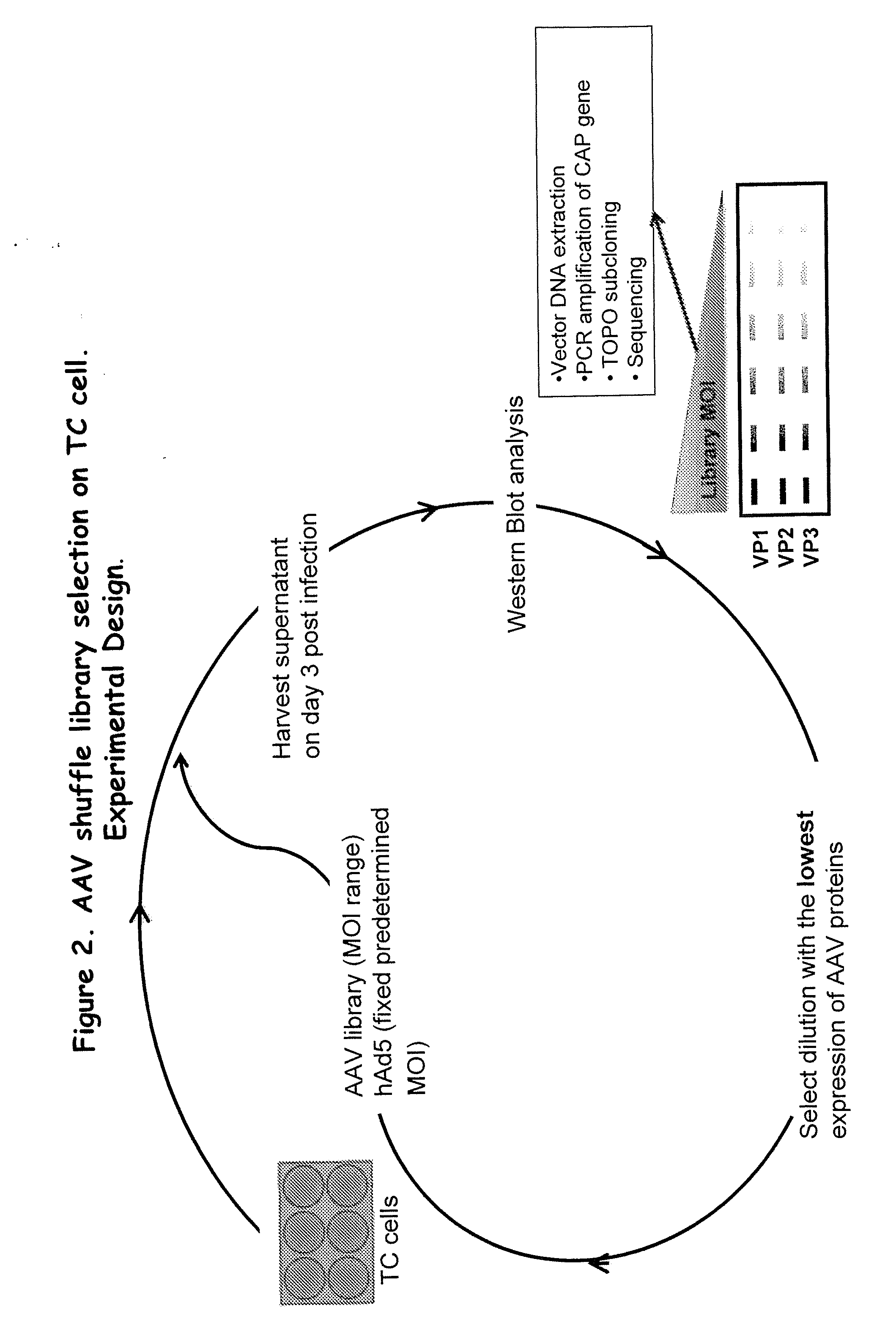Aav capsid proteins for nucleic acid transfer
a technology of capsid proteins and nucleic acids, applied in the direction of peptide sources, directed macromolecular evolution, library creation, etc., can solve the problems of insufficient infection level, current use, and insufficient number of clinically relevant cell types and tissues to effectively transduce with these vectors. , to achieve the effect of a wide host range and sufficient infection level
- Summary
- Abstract
- Description
- Claims
- Application Information
AI Technical Summary
Benefits of technology
Problems solved by technology
Method used
Image
Examples
example 1
[0216]A. Plasmids for AAV Capsid Library Generation
[0217]Plasmids containing full-length capsid (cap) genes of ten different wild type (wt) AAV serotypes were obtained, namely, AAV-1, -2, -3B, -4, -5, -6, -8, -9, avian and bovine AAV and goat AAV, which was partly synthesized (GeneArt, Regensburg, Germany) as a 888 nt fragment (nt 1023 to 1910). This subclone spans the entire right half of the goat AAV capsid protein, which comprises all 42 reported differences between goat AAV and AAV-5. These cap genes were initially amplified via PCR and subcloned into pBlueScript II SK (Stratagene). (See FIG. 1). The purpose was to flank all cap genes with sites for the unique restriction enzymes Pac I (5′) or Asc I (3′), to facilitate later cloning of “shuffled” cap genes into a wildtype AAV plasmid. All primers also contained either a Hind III (5′) or a Spe I (3′) site, to allow directed cloning into pBlueScript (none of the four restriction enzymes cuts in any par...
example 2
In Vivo Studies
[0232]The AAV library generated according to the example above and screened to select new AAV isolates in vitro in human pulmonary artery endothelial cells (hPAEC) was then screened in vivo in humanized FRG mice, according to methods described below.
[0233]Experimental Design of In Vivo AAV Library Selection
[0234]Similar to the in vitro AAV selection scheme described in Example 1, the AAV shuffle library was screened in FRG mice. As shown in FIG. 10, animals were injected with different amounts of AAV library, followed by injection of a fixed amount of wtAd5 virus. After three days, animals were sacrificed, and their livers extracted, homogenized and frozen in aliquots. One aliquot from each animal was used for analysis by western blot using anti-VP1-2-3 CAP antibody for detection. Once the animal with the lowest, but detectable signal, was identified, another frozen aliquot of liver from that animal was processed, and cleared liver lysate was injected in different amo...
PUM
 Login to View More
Login to View More Abstract
Description
Claims
Application Information
 Login to View More
Login to View More - R&D
- Intellectual Property
- Life Sciences
- Materials
- Tech Scout
- Unparalleled Data Quality
- Higher Quality Content
- 60% Fewer Hallucinations
Browse by: Latest US Patents, China's latest patents, Technical Efficacy Thesaurus, Application Domain, Technology Topic, Popular Technical Reports.
© 2025 PatSnap. All rights reserved.Legal|Privacy policy|Modern Slavery Act Transparency Statement|Sitemap|About US| Contact US: help@patsnap.com



